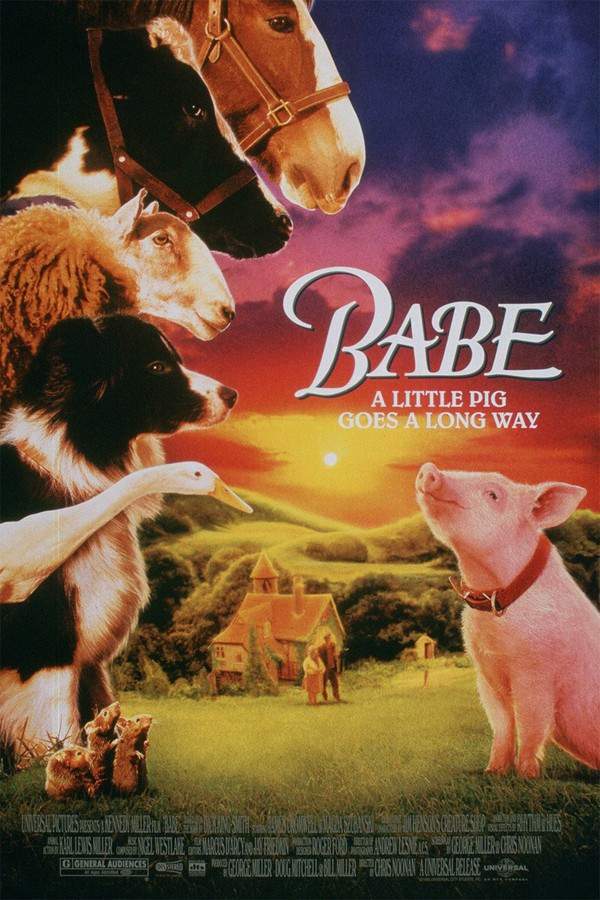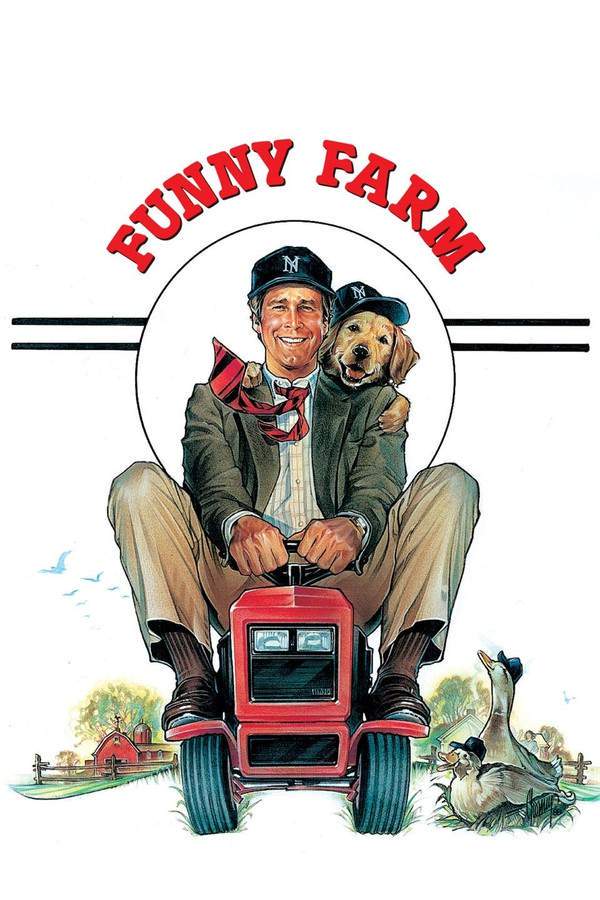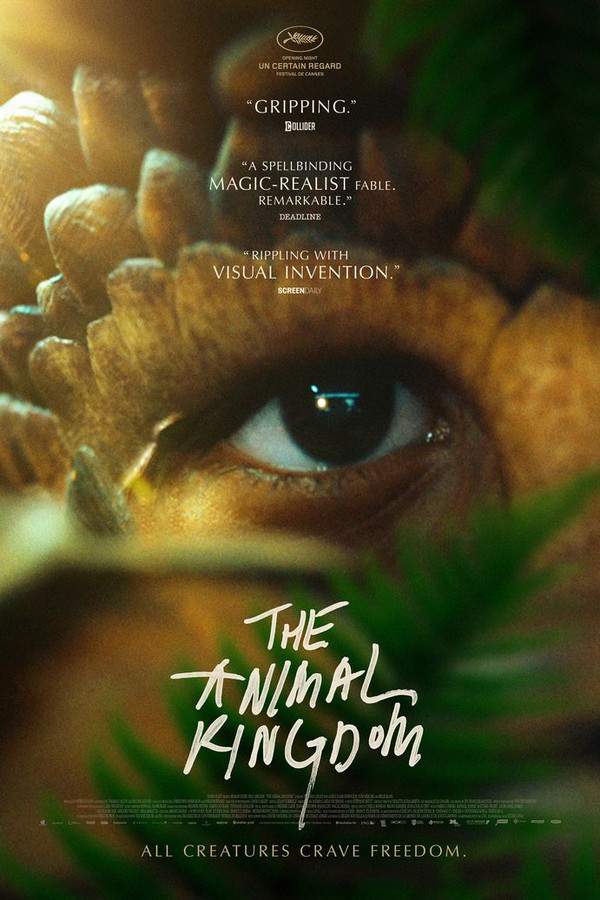
Animal Farm
Year: 1999
Runtime: 91 mins
Language: English
Director: John Stephenson
Four legs good, two legs bad. The farm animals overthrow their human owner, hoping to govern themselves and build a society of equality. As the pigs seize power, they rewrite the commandments, justify harsher measures and even sacrifice their own offspring, revealing how the revolution spirals into the very corruption it once opposed.
Warning: spoilers below!
Haven’t seen Animal Farm yet? This summary contains major spoilers. Bookmark the page, watch the movie, and come back for the full breakdown. If you're ready, scroll on and relive the story!
Animal Farm (1999) – Full Plot Summary & Ending Explained
Read the complete plot breakdown of Animal Farm (1999), including all key story events, major twists, and the ending explained in detail. Discover what really happened—and what it all means.
Mr. Jones, Pete Postlethwaite, the owner of Manor Farm, invites the Pilkingtons to a gathering to talk about his debts, setting the stage for a quiet yet pivotal gathering of the animals. In the barn, Old Major, Peter Ustinov the revered Middle White boar, shares a radical vision: humanity is the true enemy, and a united revolution could lead to a future of equality and prosperity for every animal. He teaches them a stirring song, “Beasts of the World,” a moment that stirs hope and courage among the livestock. But the celebration is cut short when Jones, drawn by the noise, investigates and tragically shoots Major, a brutal reminder of how fragile life can be in a world dominated by humans.
Jones heads into town for a drink, leaving the animals unfed. When he returns, Boxer, Manor Farm’s sturdy shire horse, helps the animals break into the food shed, a bold act that kindles a spark of rebellion. The power dynamic shifts quickly as the animals force Jones, his wife, and the local men off the farm and into town. With Jones gone, a new order begins to take shape. Snowball, a large White boar, rises to leadership and renames the property Animal Farm, signaling a rejection of the old regime. The Seven Commandments of Animalism are drafted, initially meant to guide all animals toward harmony and mutual aid.
Jessie, a border collie, becomes a key maternal figure on the farm as she gives birth to puppies, signaling the growth of a new generation under the animal-led rule. Julia Ormond brings Jessie to life, and her presence marks the intimate, personal side of life on the reforming farm. Two other intelligent voices quickly join the leadership circle: Napoleon, a shrewd Berkshire boar, and Squealer, a nimble Tamworth boar, who convene a discreet gathering to consolidate power. Pincher, a rottweiler, swears loyalty to them and plays a crucial role in training the newborn canine guards. As the new regime takes hold, the pigs begin to hoard essentials—apples and milk—carefully keeping these resources for themselves, a quiet departure from the egalitarian promises that sparked the initial rebellion.
To safeguard their revolution and keep rivalries at bay, the pigs intensify their control and project a sense of inevitability about the farm’s future. The neighboring farmer Pilkington, a figure who embodies the outside world’s temptations and threats, leads an invasion into Animal Farm with villagers, testing the animals’ resolve. Snowball anticipates this danger and orchestrates a formidable defense, and the invaders retreat in confusion. Some on the outside begin to question whether cooperation with the animals might be possible down the line, underscoring the complexity of rebellion in an ever-shifting power landscape.
Snowball proposes a windmill project designed to improve living conditions for all animals by providing electricity and cooling the burden of hard labor. But Napoleon, Patrick Stewart from behind the scenes, opposes Snowball and orders the grown puppies—raised under his direct supervision—to drive Snowball from the farm. The windmill becomes a symbol of competing visions for the farm’s future, and Napoleon asserts that the pigs will decide the farm’s course, reshaping the original egalitarian ideals into a hierarchy that favors the pigs’ needs.
As the windmill project gathers momentum, Pilkington learns that some of the animals can speak English and barter with them, hinting at a broader, more interconnected world beyond the fences. Jessie reveals that the pigs have been living in the farmhouse and sleeping in beds, a breach of the original commandments—an early sign that the leadership is bending the rules to suit its own preferences. Napoleon and Squealer, Ian Holm the quick-witted propaganda architect, quietly alter the sleeping-in-beds commandment to cover the pigs’ behavior, a small, yet telling concession to power.
Nightly, the regime tightens its grip. At the Red Lion Inn, Pilkington mocks Napoleon’s inexperience, exploiting the power imbalance by trading cheap farm equipment for influence. Inside Animal Farm, Napolean further reframes control: food shortages justify eggs for the market as a necessity, and when the hens resist, Napoleon imposes a cruel decree, punishable by death for defiance. Squealer’s propaganda machine churns, making the new rules seem like the only viable path forward, even as the alcohol and killing commandments are quietly renamed to emphasize restraint rather than excess.
The windmill’s construction continues, but tragedy interrupts the progress when Boxer, the loyal horse, is seriously injured. When the time comes to transport him away, Jessie and Benjamin perceive that the van is headed to the glue factory, a grim fate that underscores the farm’s terrifying transformation from liberation to manipulation. Napoleon secures a cold victory by selling Boxer to the glue factory, a stark betrayal of the very ideals that sparked the rebellion. The film captures a chilling moment as Pilkington and the pigs share a quiet triumph, with Pilkington’s sympathy for the animals giving way to a cynical grin as the deal is sealed.
That night, Jessie observes Napoleon and Pilkington dining together in the farmhouse, a symbolic pairing that highlights the blurred lines between oppressor and ally. Napoleon’s leadership becomes increasingly indistinguishable from the oppressive forces of Jones and Pilkington, and Jessie can only watch as the two seem to fuse into a single political persona. The aging creatures realize that the final commandment—“All animals are equal”—has been reshaped to read: “but some animals are more equal than others.” The revelation leaves Jessie, Benjamin, Muriel, and other animals deeply unsettled as they recognize the betrayal that has taken place within their ranks.
With the decades passing, the regime’s tyranny continues, and the remaining animals eventually flee or fade from the farm’s memory. When outsiders reclaim the land years later, the state of the farm appears ruined, and Napoleon and Squealer appear to have fallen under the very rule they once claimed to overthrow. Yet a few animals endure, including Jessie’s puppies who now recognize her as their mother. A new family purchases the farm, and the survivors vow to teach the next generation to avoid the same mistakes that led to Jones’s downfall and Napoleon’s rise.
In the end, the tale of Animal Farm remains a stark reminder of how power can deform ideals and how easily a revolution can become a repetition of the very oppression it sought to end. The animals’ long journey—from hopeful collective action to a rigid, self-serving hierarchy—serves as a cautionary chronicle about leadership, loyalty, and the delicate balance between equality and control.
Last Updated: October 07, 2025 at 08:42
Unlock the Full Story of Animal Farm
Don't stop at just watching — explore Animal Farm in full detail. From the complete plot summary and scene-by-scene timeline to character breakdowns, thematic analysis, and a deep dive into the ending — every page helps you truly understand what Animal Farm is all about. Plus, discover what's next after the movie.
Animal Farm Timeline
Track the full timeline of Animal Farm with every major event arranged chronologically. Perfect for decoding non-linear storytelling, flashbacks, or parallel narratives with a clear scene-by-scene breakdown.

Characters, Settings & Themes in Animal Farm
Discover the characters, locations, and core themes that shape Animal Farm. Get insights into symbolic elements, setting significance, and deeper narrative meaning — ideal for thematic analysis and movie breakdowns.

Similar Movies to Animal Farm
Discover movies like Animal Farm that share similar genres, themes, and storytelling elements. Whether you’re drawn to the atmosphere, character arcs, or plot structure, these curated recommendations will help you explore more films you’ll love.
Explore More About Movie Animal Farm
Animal Farm (1999) Scene-by-Scene Movie Timeline
Animal Farm (1999) Movie Characters, Themes & Settings
Animal Farm (1999) Spoiler-Free Summary & Key Flow
Movies Like Animal Farm – Similar Titles You’ll Enjoy
Babe (1995) Plot Summary & Ending Explained
Funny Farm (1988) Movie Recap & Themes
Barnyard (2006) Film Overview & Timeline
The Animal (2001) Complete Plot Breakdown
Animal (2023) Complete Plot Breakdown
Just Animals (2022) Story Summary & Characters
Animals United (1969) Ending Explained & Film Insights
Down on the Farm (1920) Complete Plot Breakdown
Animal Farm (1954) Detailed Story Recap
Speaking of Animals Down on the Farm (1941) Story Summary & Characters
Farmyard Symphony (1938) Complete Plot Breakdown
Peasants (1935) Full Summary & Key Details
Animal Farm (2025) Detailed Story Recap
Pigs Is Pigs (1954) Plot Summary & Ending Explained
Our Lovely Pig Slaughter (2024) Plot Summary & Ending Explained

















